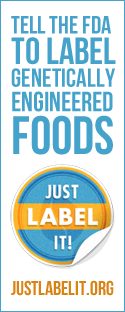 Acrylamide was first detected in 2002 by a Swedish working group in various starch-containing, thermally processed foods like French fries or potato crisps. In 2015, the European Food Safety Authority (EFSA) confirmed that acrylamide in food potentially increases the risk of developing cancer for consumers in all age groups. INTERNATIONAL -- Already in July 2017, the European Commission adopted a final Draft Regulation to control levels of acrylamide in food. The draft includes the obligation for food business operators to apply appropriate mitigation measures for acrylamide reduction to certain foodstuffs. The aim of these measures is to achieve levels of acrylamide as low as reasonably achievable below certain Benchmark Levels. Furthermore, the Draft Regulation lays down requirements for sampling as well as performance criteria for the analysis of acrylamide. It is anticipated that the Regulation will come into force during spring 2018.
Also read, Europe delays phasing out glyphosate herbicide over farmer's concerns. Foodstuffs Referred to in the Draft Regulation Are:
Occurrence and Toxicology of Acrylamide Acrylamide (2-propenamide) was first detected in 2002 by a Swedish working group in various starch-containing, thermally processed foods like French fries or potato crisps. Since then, it is commonly known that acrylamide can be developed during thermal procedures (baking, roasting, frying, deep-frying) from asparagine and reducing sugars like fructose and glucose. Acrylamide causes cancer within animal testing. In 2015, the European Food Safety Authority (EFSA) confirmed that acrylamide in food potentially increases the risk of developing cancer for consumers in all age groups. Regulatory Provisions So far, there are no maximum levels for acrylamide in food. With Commission Recommendation 2013/647/EU, the EU published modified Indicative Values for acrylamide in certain foodstuffs, which are based on monitoring results of the European Food Safety Authority (EFSA). Besides, the German Federal Office of Consumer Protection and Food Safety (BVL) published Signal Values for additional matrices. When exceeding Indicative or Signal Values, producers are obliged to implement measures to minimise the acrylamide levels within their products. Therefore they may use intervention steps summarised in the Acrylamide Tool Box (FoodDrinkEurope) or the Code of Practice for Acrylamide (Codex Alimentarius). The new Regulation will replace the system of Indicative and Signal Values. Most of the new Benchmark Levels are lower than the previous Indicative Values. SOURCE Eurofins Deutschland
1 Comment
7/3/2018 02:42:36 am
Thank you for some other informative web site. Where else may just I am getting that type of information written in such an ideal means? I’ve a project that I’m simply now operating on, and I’ve been on the glance out for such information.
Reply
Leave a Reply. |
Advertisement
News & Updates
Stay informed with the latest news around foodservice, agriculture and other related food news. Advertisement Opportunities
|

 RSS Feed
RSS Feed


